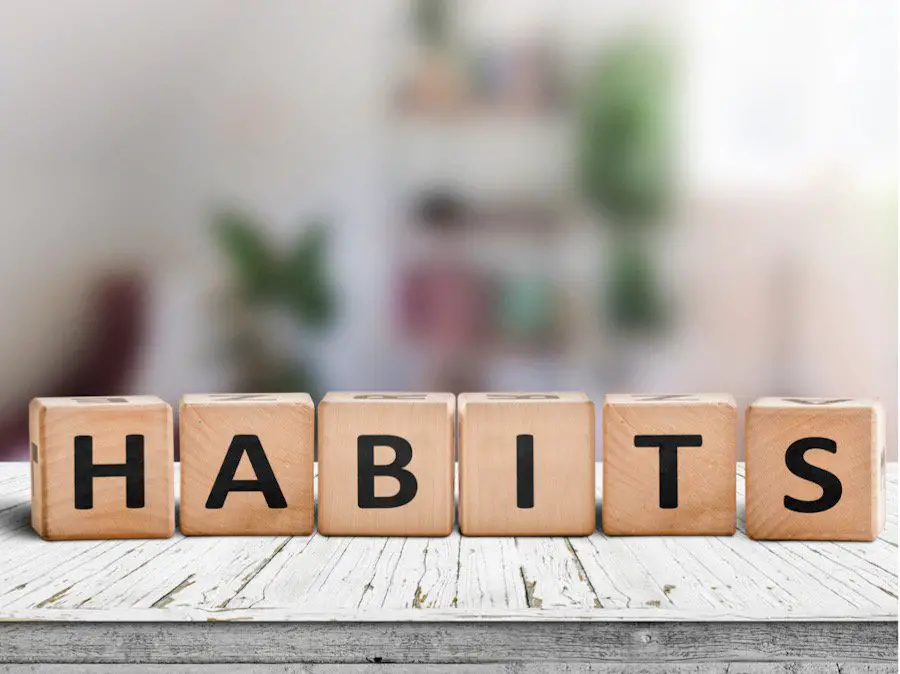One of the most difficult parts of creating a new habit is fitting it into your life. Deciding on a time of day is a strong way to face this difficulty head-on. In making that decision, you need to know, should you keep a gratitude journal morning or night practice?
Here’s the trouble with deciding on the best time to write gratitude journal entries. While the morning or night are generally considered best, choosing between the two will have more to do with your personal routine than proven effects.
When it comes to the best time for writing a gratitude journal, the morning allows you to start your day with the benefits of gratitude in hand. However, some people find that gratitude journaling before sleep allows them to wake up with a strong attitude and sleep better. To make a better decision for your needs, it’s necessary to consider why you want to keep a gratitude journal and your current habits.
In this article, I will help you figure out which is the best time for you to write a gratitude journal. If you are new to journaling, you may also want to check out my complete beginners’ guide here.
Table of Contents
The Benefits of a Gratitude Journal
Gratitude journaling can make you more resilient. It’s easier to think about everything we’re stressed about. It’s easier to focus our minds on the troubles we are trying to resolve and overcome. However, thinking that way all the time wears us down emotionally and mentally. When you find ways to practice gratitude, the negatives seem more manageable, and we become more resilient in our day-to-day lives.
This resilience has been seen in a variety of studies. It’s shown up as improved focus and quicker mental recovery when the focus is lost. It also shows up as an improved response to anxiety and grief situations.
We often think of resilience as something that’s needed when we face a major life trauma or obstacle, but everyday small pieces of resilience are needed as well. Practicing gratitude helps in both of these types of situations.
Perhaps part of the reason gratitude builds people up and makes them more resilient is seen in some of the other benefits that studies have shown, like improved sleep. Gratitude journaling has been shown to lower our stress responses, lowering things like our heart rates and cortisol levels. Doing this before bed can improve sleep quality.
Gratitude journaling can also help clarify what’s important in your daily life, so you have a better handle on what to focus your attention on. When you know what’s important, it’s easier to let the other things go. This also leads to an improved sense of self-awareness.
If you want to know more about the benefits of gratitude journaling, be sure to check out my article here.
When Is The Best Time To Write Gratitude Journal Entries
All right, so now, should you write in your gratitude journal morning or night?
There are two things to consider here. One is what will bring you the most benefit. The other is what time of day this habit is most likely to stick to.
Do you feel more stressed when you first start your day or at the end of the day? Perhaps your stress signals are that you feel overwhelmed, like you can’t focus on any one thing, or that you just don’t have the gumption to start. These types of feelings can make it difficult to get your day started or to fall asleep. If you’ve noticed this happens more in the morning or in the evening, then this may tell you which time of day you need it most.

Do you spend a long time trying to get to sleep? This is a very common situation. In the evening, if you spend five minutes sitting down with a gratitude journal, you may find some improvement in this situation.
By spending five to ten minutes focused on your gratitude journal entry, you’ll be able to find some mental clarity on what was most important in your day. This also helps focus on what was important in your thoughts. With practice, this may help you let go of the extraneous stressors you tend to think about in the evening when your mind is trying to catch up with everything that happened during the day.
If you tend to go to sleep fine, but wake up frazzled, then your mornings may see a greater benefit from this same type of clarification. If you have particularly busy mornings, it may be best to see if you can wake up a touch earlier and take ten minutes for yourself to write in a gratitude journal before your morning routine starts, so you can feel more prepared and ready to take on the chaotic morning routine.
Keep in mind that as far as turning this into a habit goes, you’ll see better results if you can habit stack. If you have a firm morning routine, like you always drink your coffee at the kitchen table alone, then adding gratitude journaling to that established routine will be easier to make into a new habit. If you would like more tips and ideas on how to make journaling a habit, check out my article here.
How Often to Write In Your Gratitude Journal
The answer to this can actually be a touch tricky!
As far as making gratitude journaling a habit goes, it can be easiest for most people to attempt to make this a daily routine. However, studies have shown that writing in a gratitude journal for fifteen minutes per day three times a week may have the greatest impact. This is perhaps because it helps balance out gratitude fatigue and keeps things fresh. Keeping a three times a week habit can be more difficult to maintain though, so keep that in mind as you’re making this decision.
How to Keep a Gratitude Journal

When you go to write your gratitude journal morning or night entries, there are a few tips to help you get the most out of your new practice.
The biggest key here is to be specific and descriptive. That doesn’t mean you need to write a paragraph for each item on your list, but a sentence or two.
Instead of writing that you are grateful for your partner, write that you are grateful they remember to buy the coffee creamer you like when they go to the grocery store.
Tim Ferriss is an entrepreneur, speaker, and long-time gratitude journal enthusiast. He says that to keep your gratitude journaling fresh, it can be helpful to keep four categories in mind. Writing these categories on a page in the back of your journal can be helpful, so when you get stuck, you can flip to them and use them as inspiration.
His four categories focus on relationships, opportunities, events of the day (or another day if you’re having feelings about it today), and simple things.
The first example about the coffee creamer above counts as a relationship category example. Opportunities may be that you are grateful you have the opportunity to drink your coffee alone each morning. An event for the day may be that you are grateful for the time you spent walking in the park and for the dogs you watched playing while you were there. A simple thing may be that you are grateful for the weather and how the sunlight really looks amazing in your kitchen.
In each of those examples, I attempted to add something a little more specific to why I’m grateful for it. The weather is something to be grateful for, but then I added a more specific note to why the sunlight was something that I feel grateful for today.
By being more specific, I feel the gratitude more in my chest. I’m also being more mindful of my surroundings and the things I’m happy about in my life.
Your Gratitude Journal Morning or Night Entries

The more you practice writing in your gratitude journal, the more you’ll see the benefits and the more experienced and confident you’ll feel in the habit. If you feel stuck on what to write, don’t worry. That is a normal part of this process. It can make you feel like you’re ungrateful or incapable, but that’s not the case. The reason Tim Ferriss offers four-category suggestions for what to write about is that even experienced gratitude journalers run into days where they feel gratitude block. This is like writer’s block. Sometimes, it will happen. Don’t beat yourself up about it.
If it’s too hard to write a list one day, you can let that go. Try your best for at least five minutes, and then decide that you’ll try again the next time. That’s just not happening today. If you beat yourself up about it, you’ll get discouraged and drop the practice, which isn’t the goal at all.
If you can’t decide on the best time to write gratitude journal entries for yourself, then simply choose one. Flip a coin and start doing it. Then, if the habit sticks, and you enjoy it, stay with it! If it’s not working for you after the first week, then go ahead and try the opposite time of day. The truth is that when it comes to keeping your gratitude journal, there are tips and tricks to help you get the most benefits and be more mindful about your practice, but at the end of the day, the best tip is to follow what feels good.


